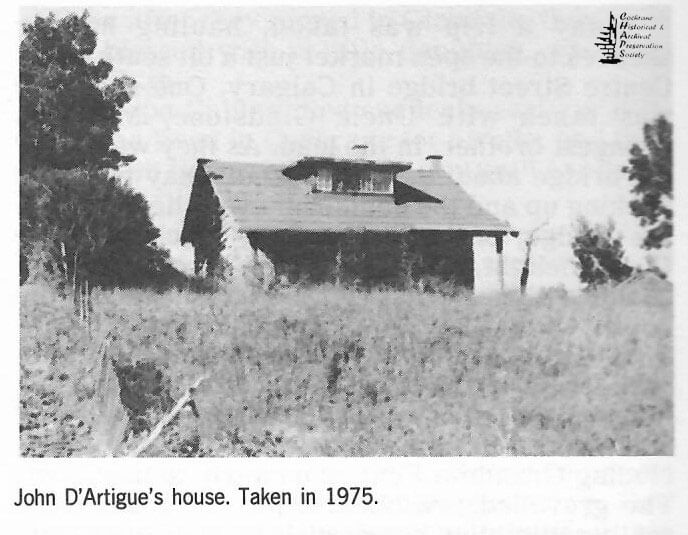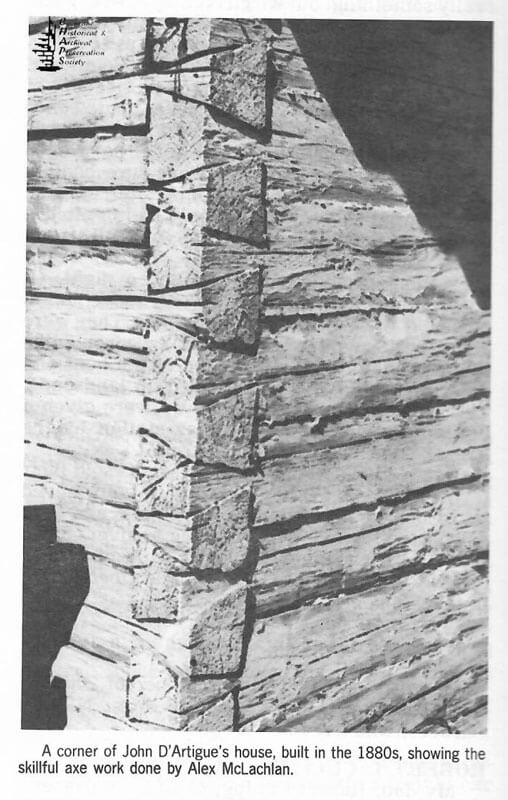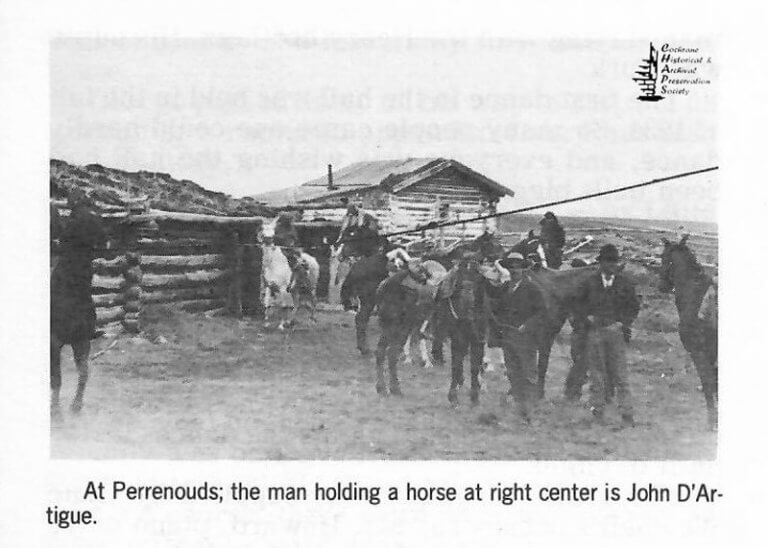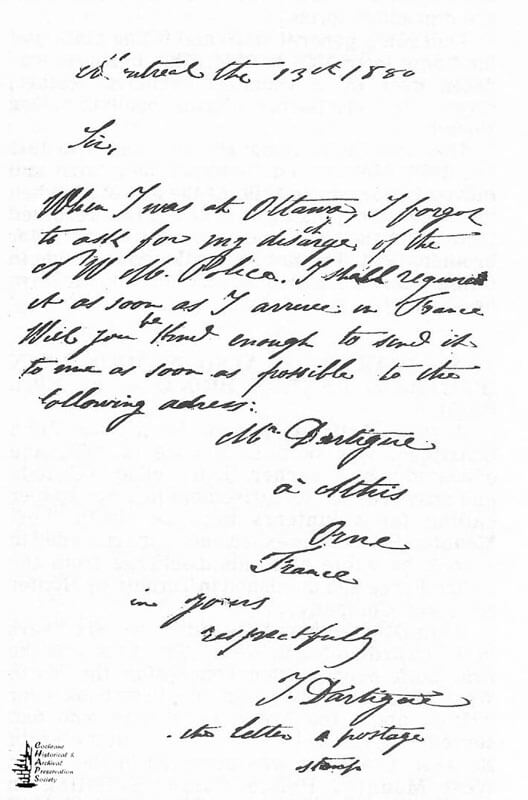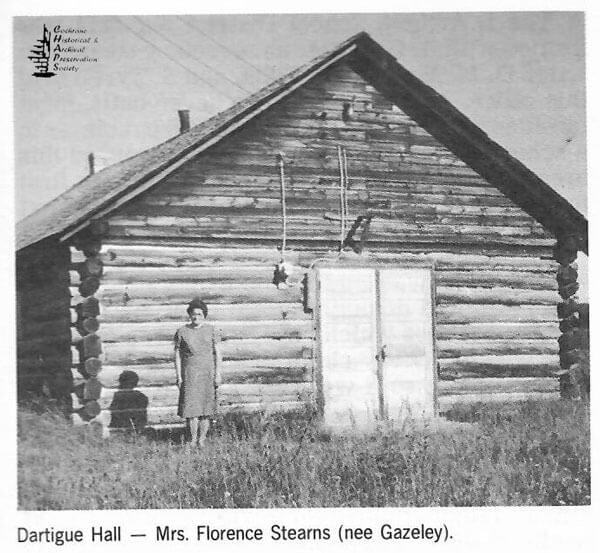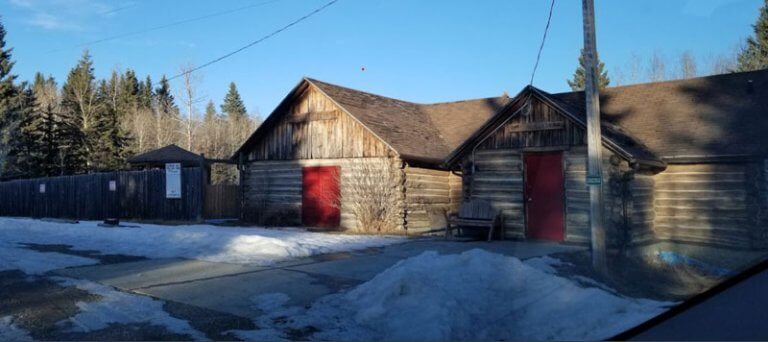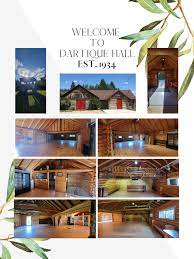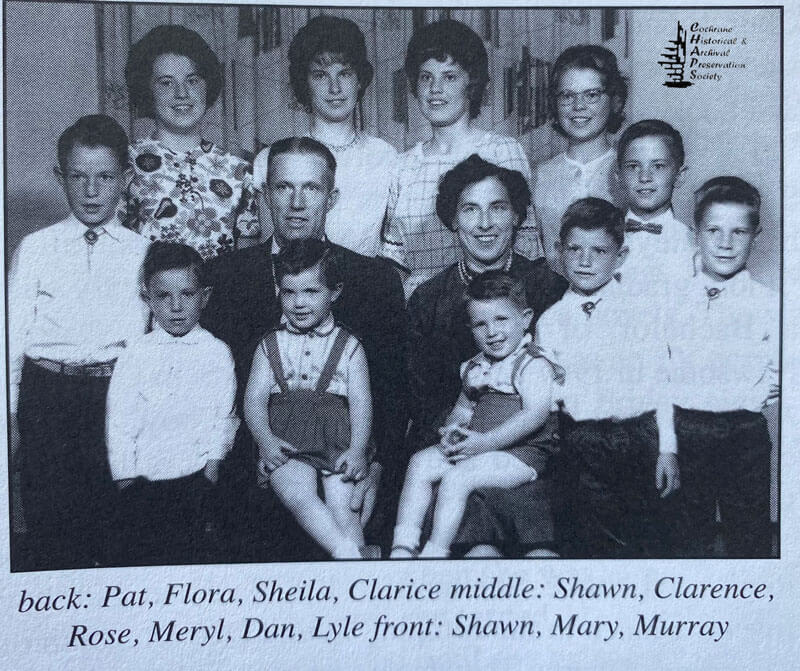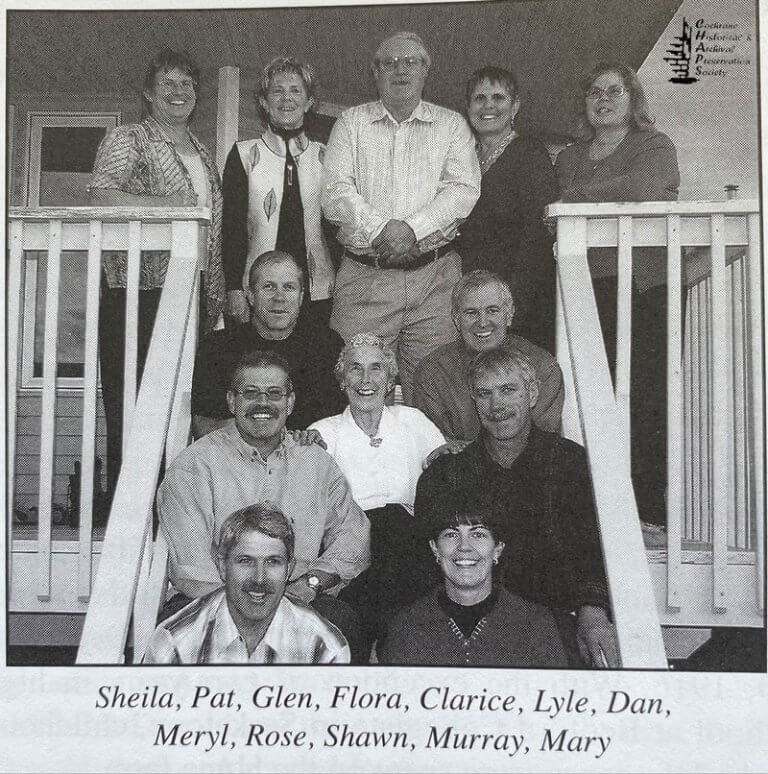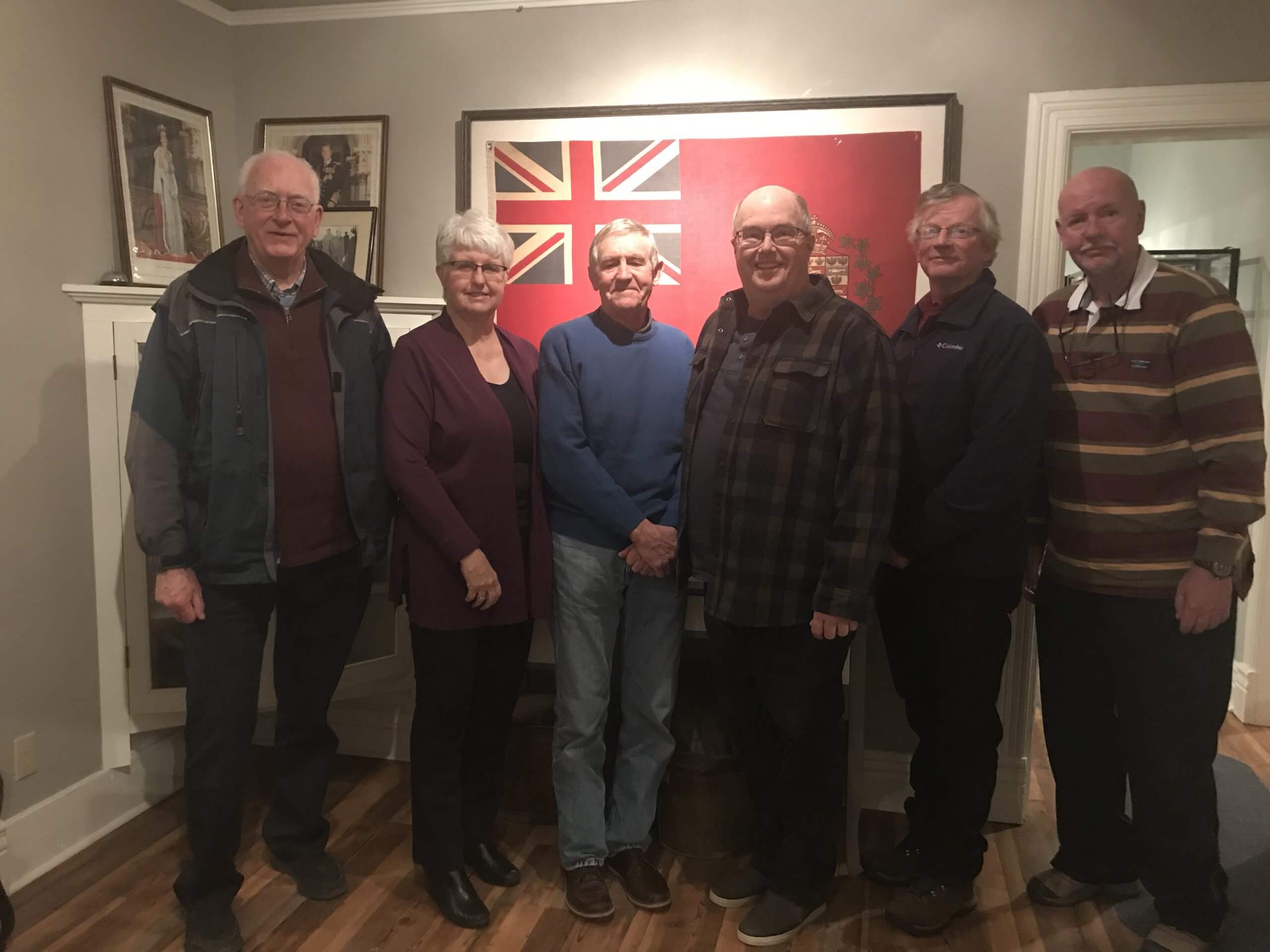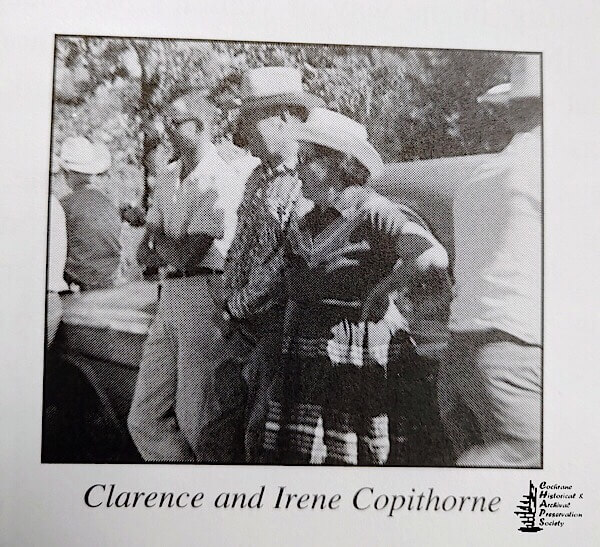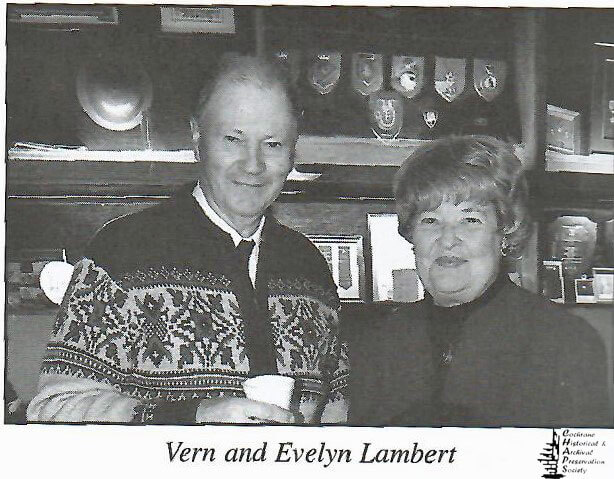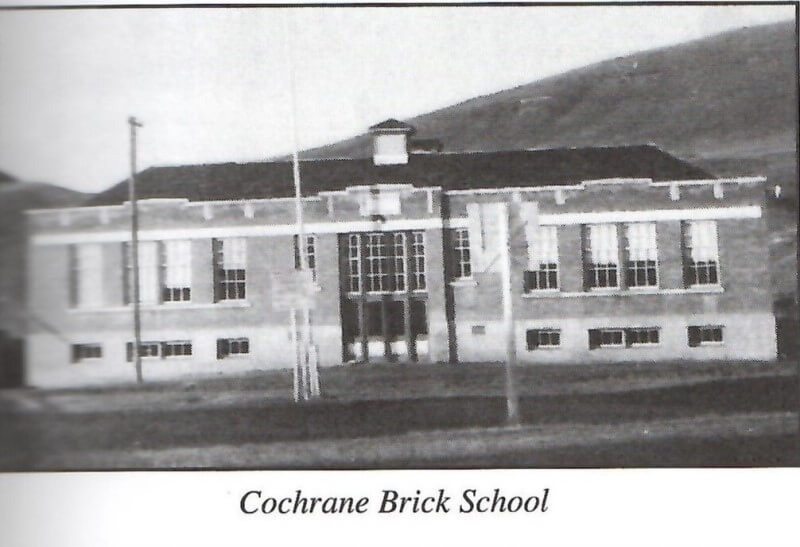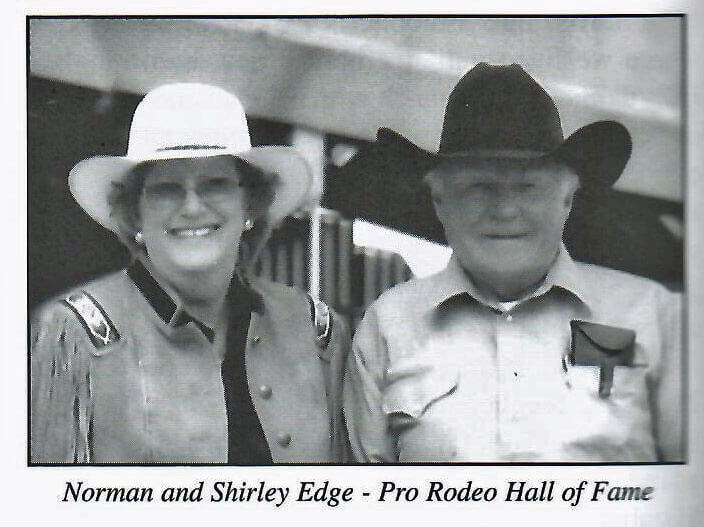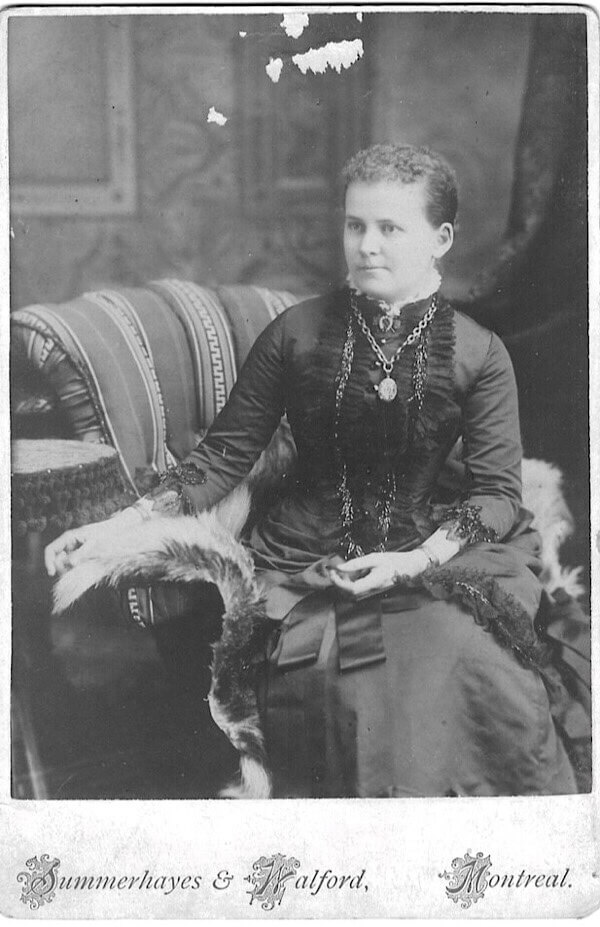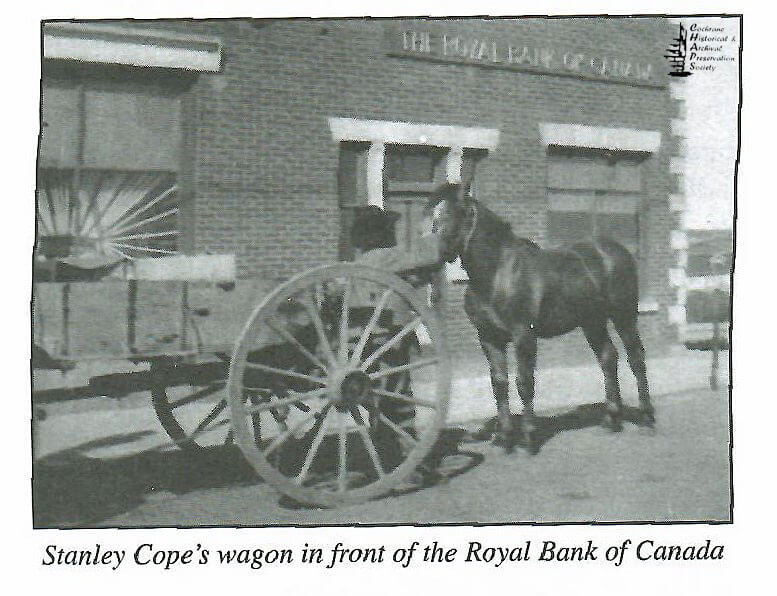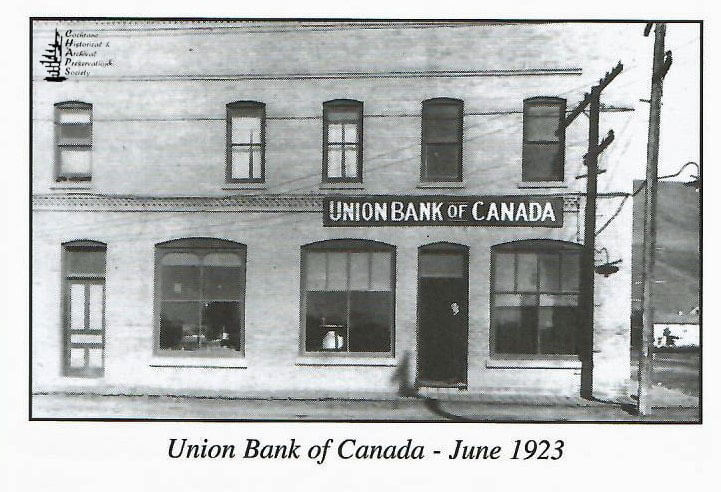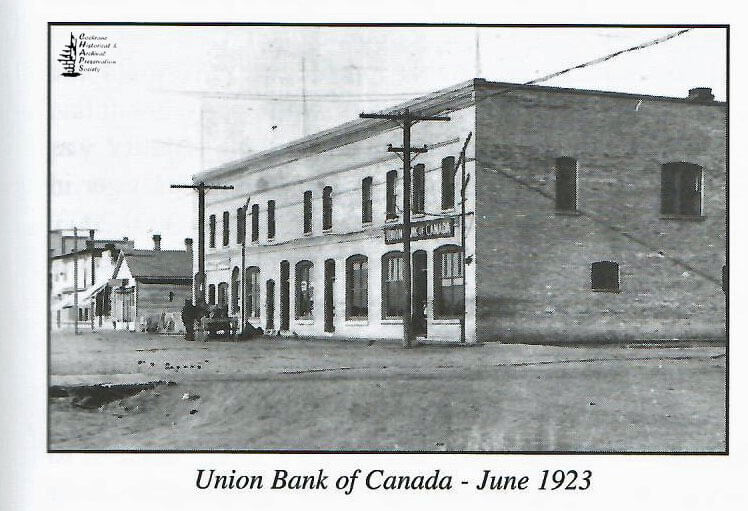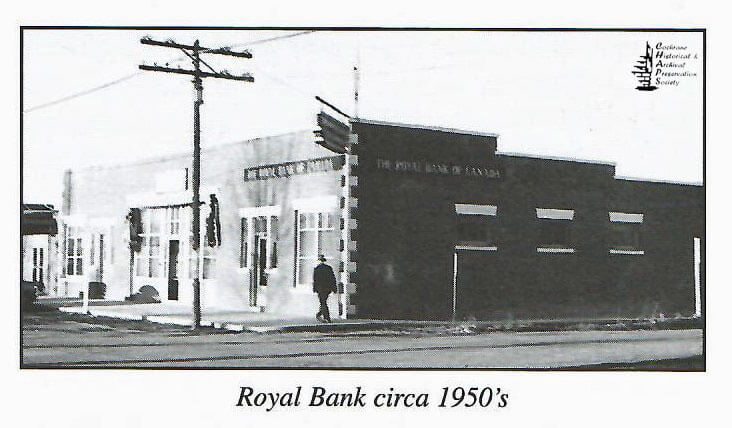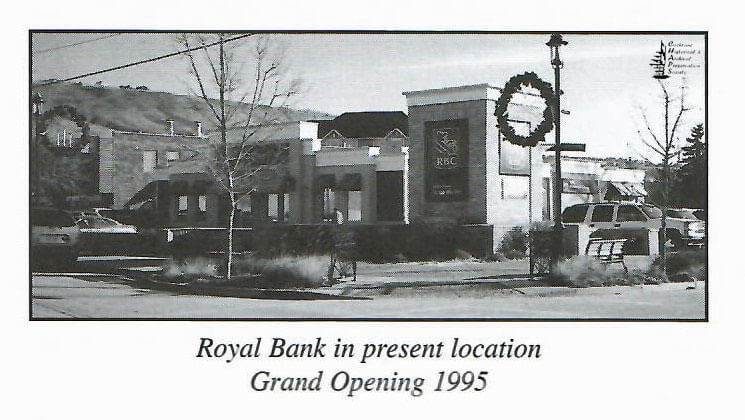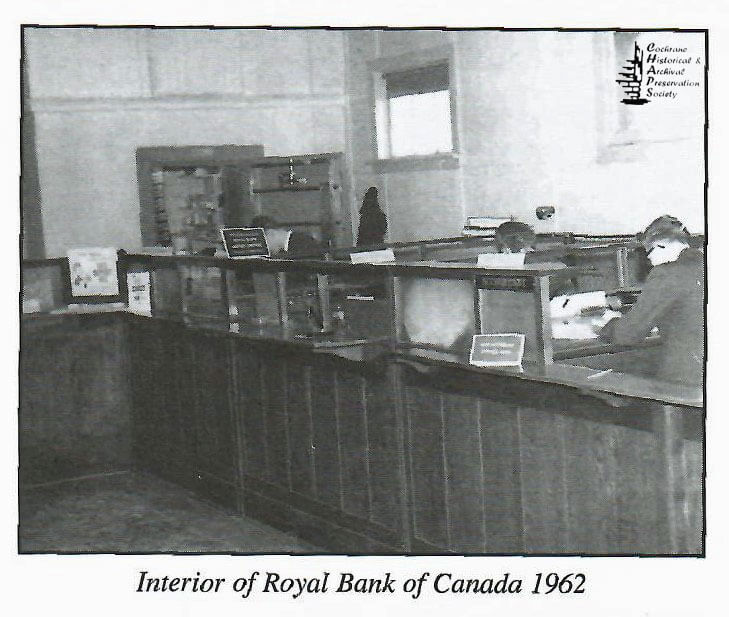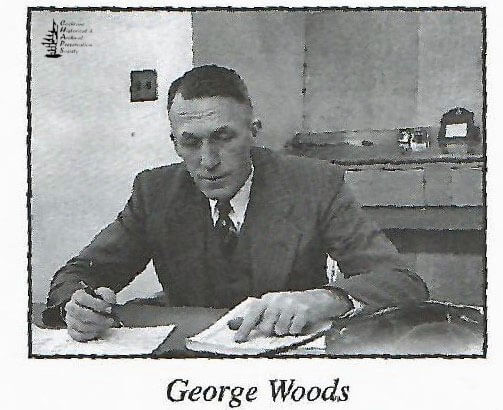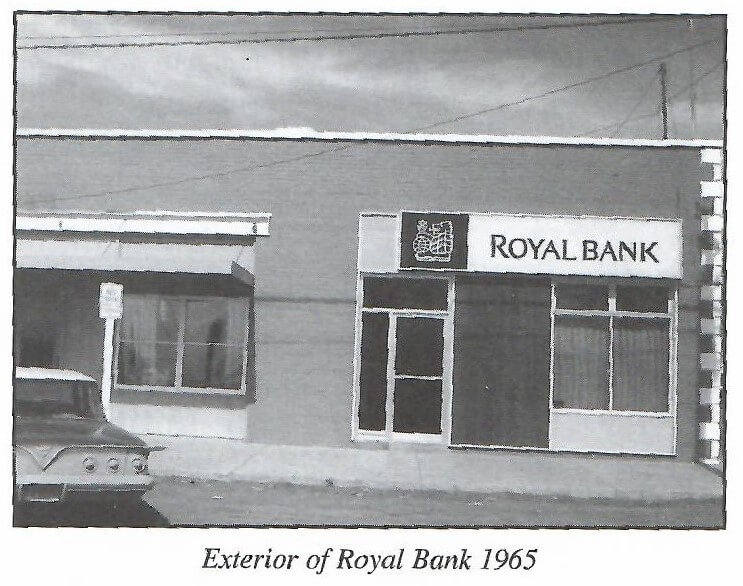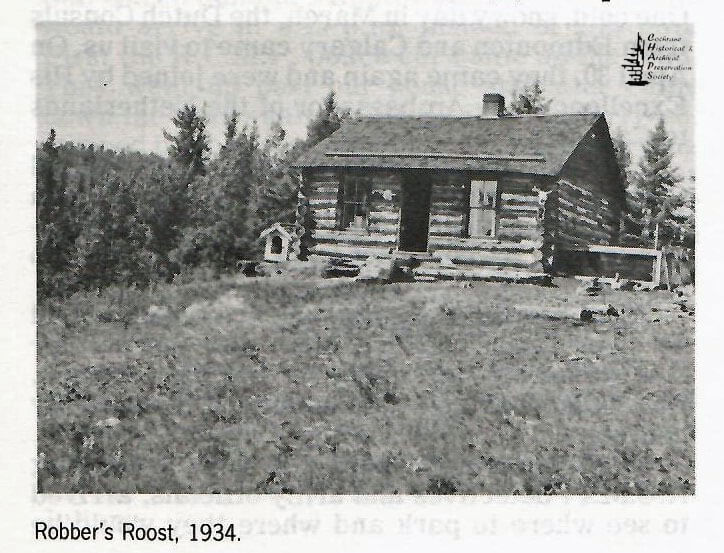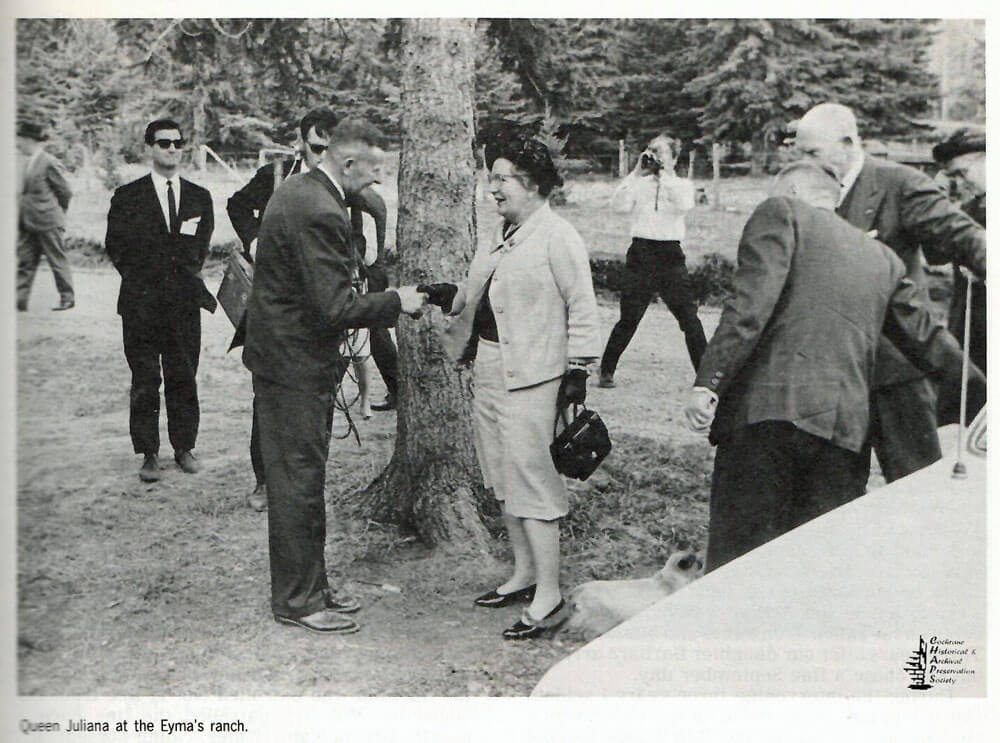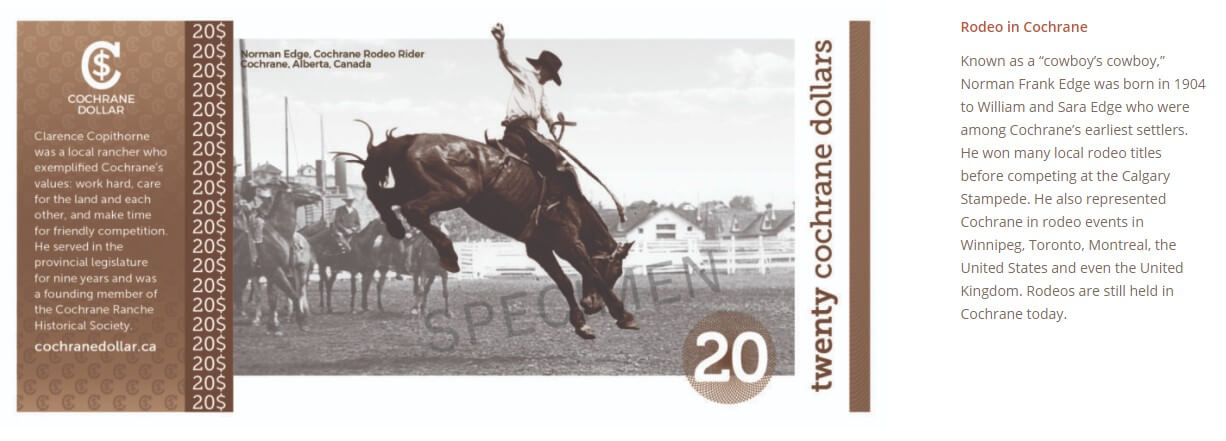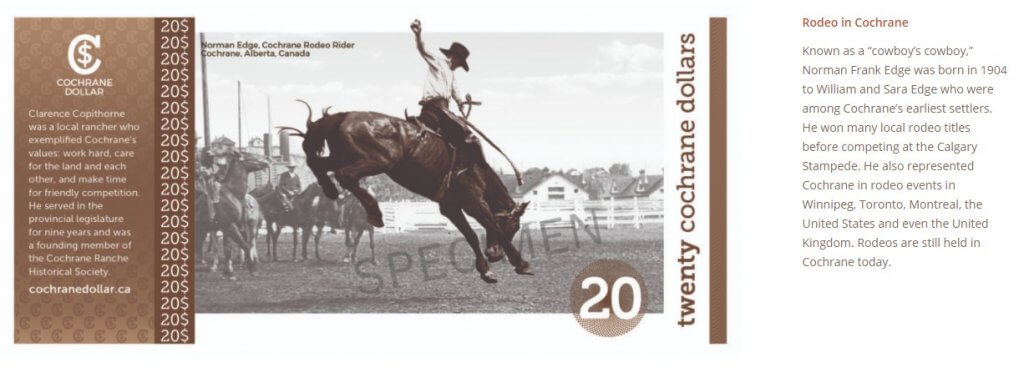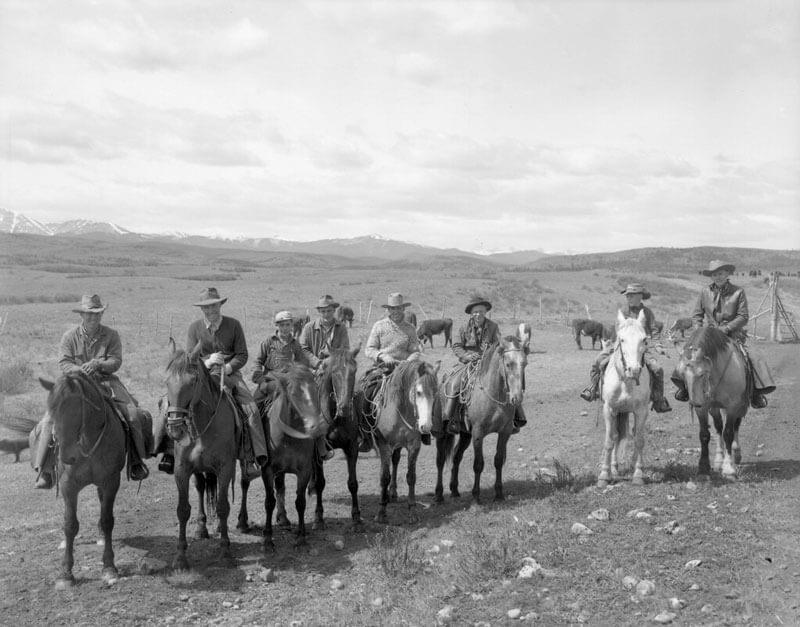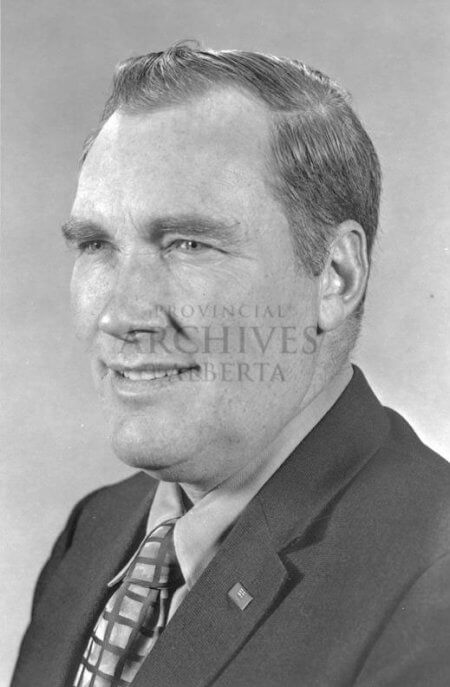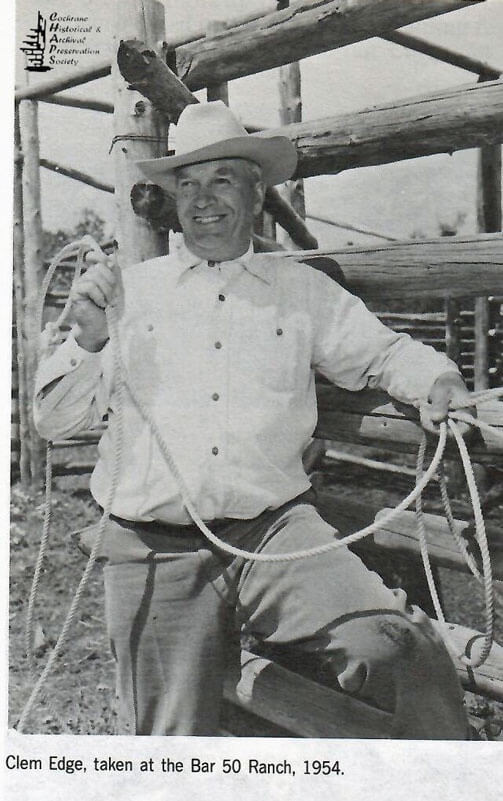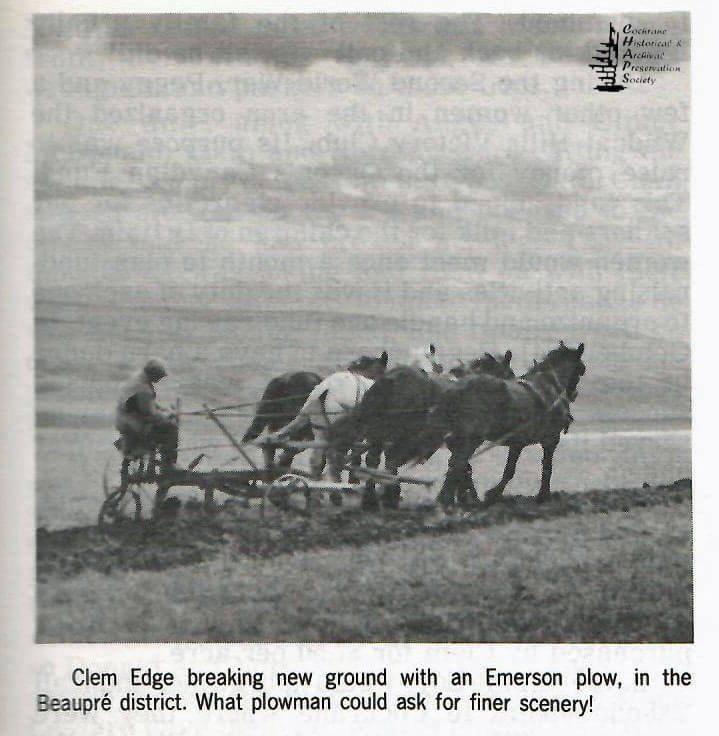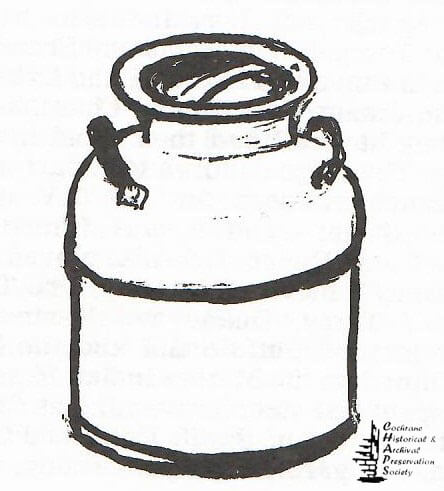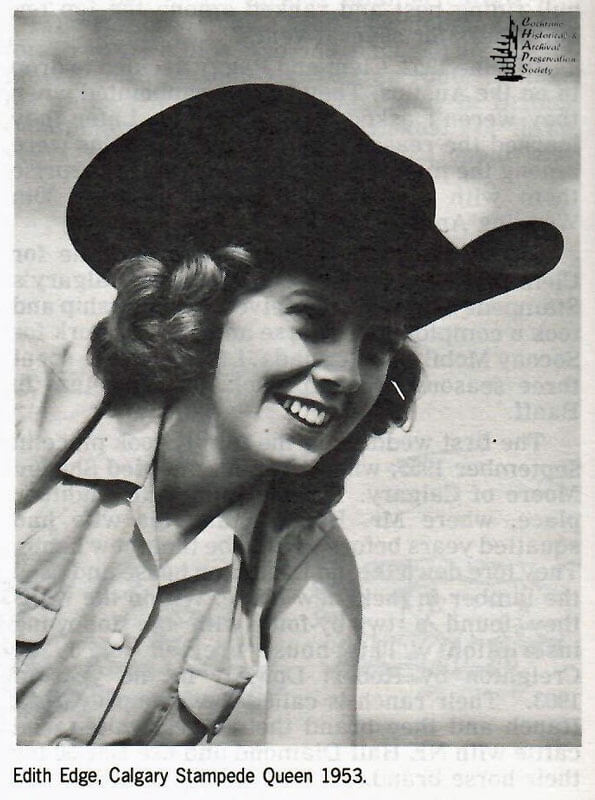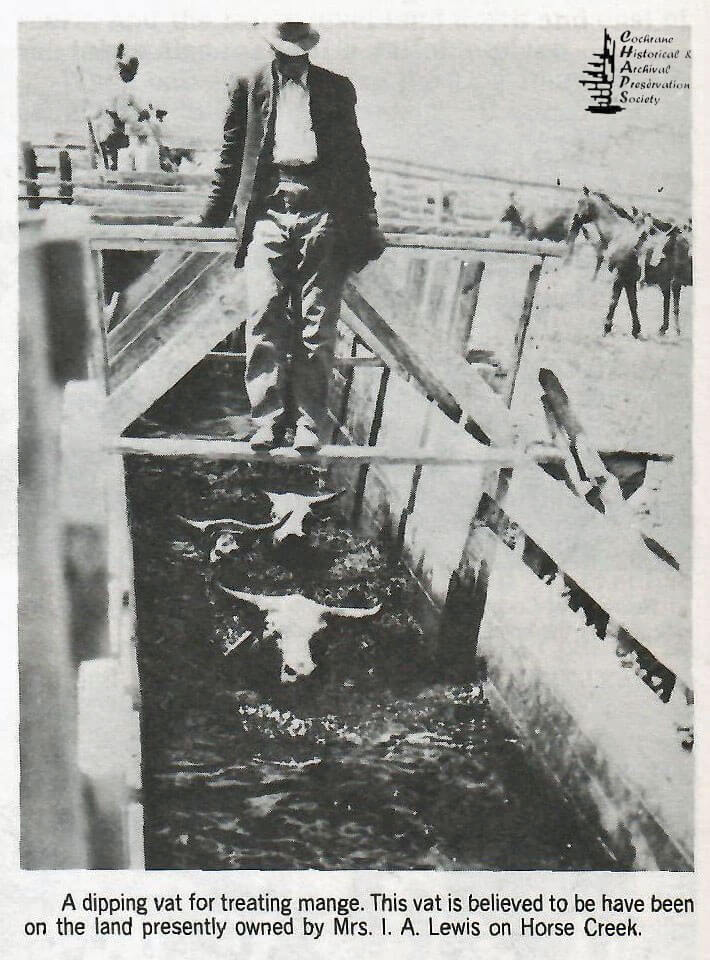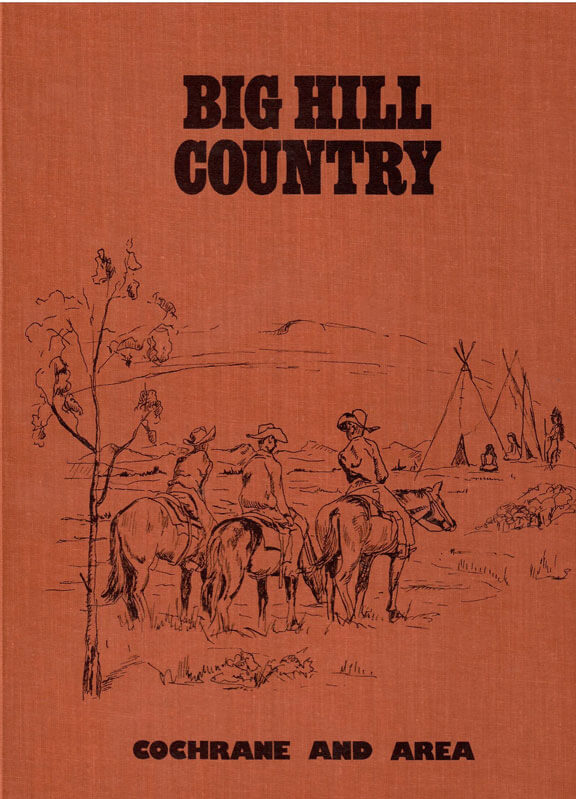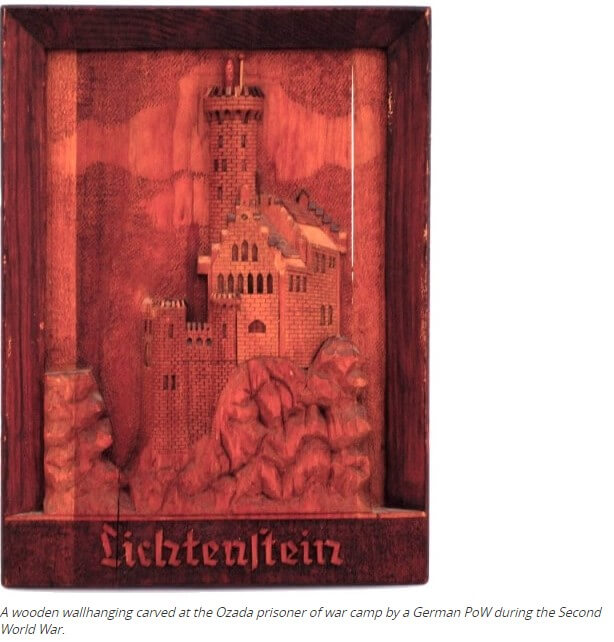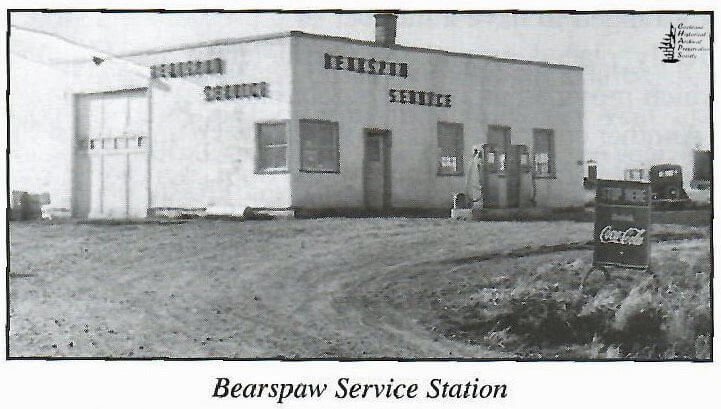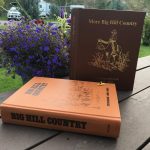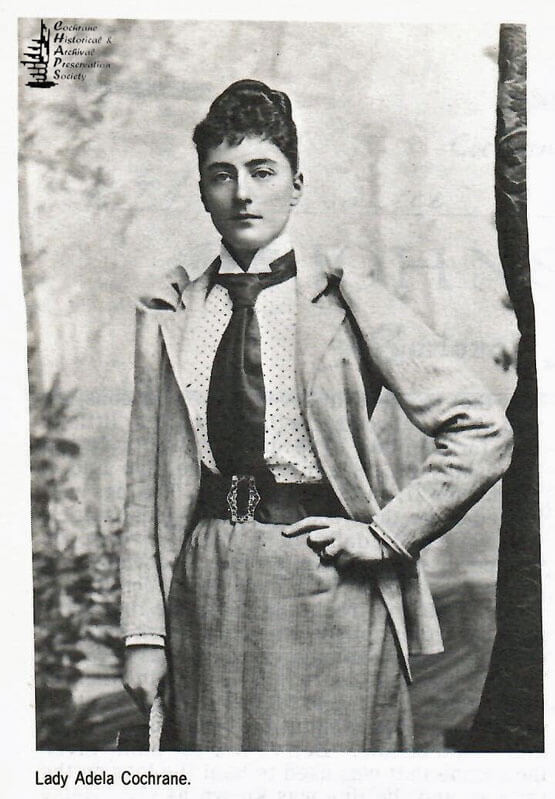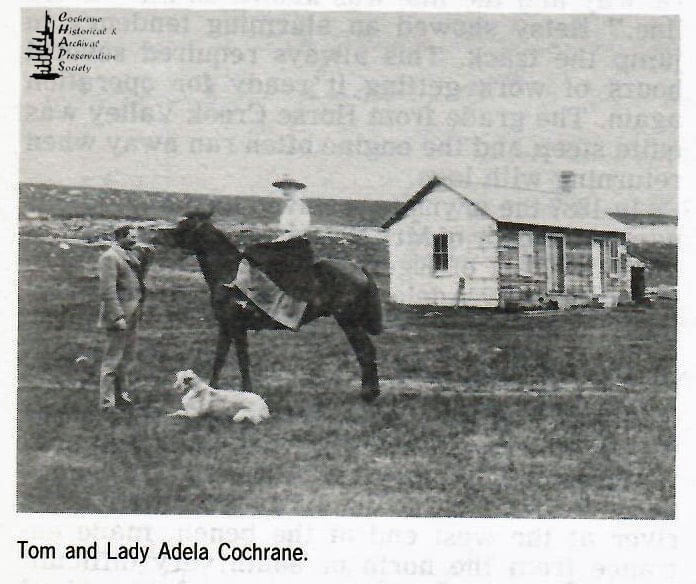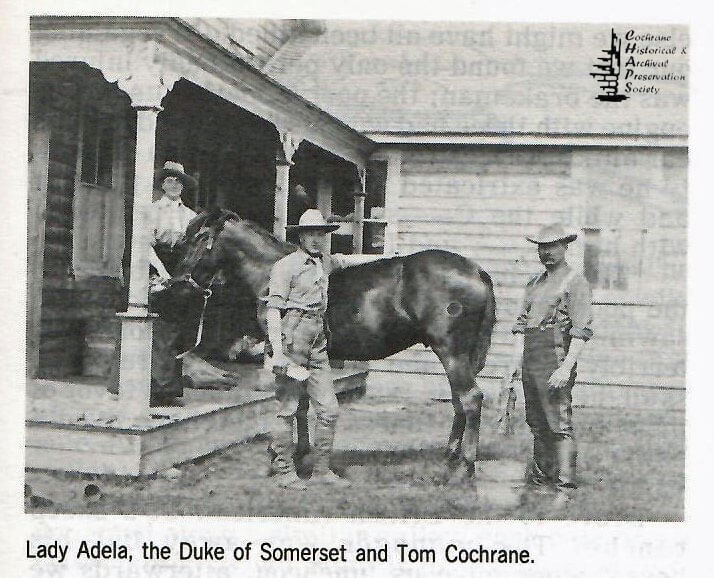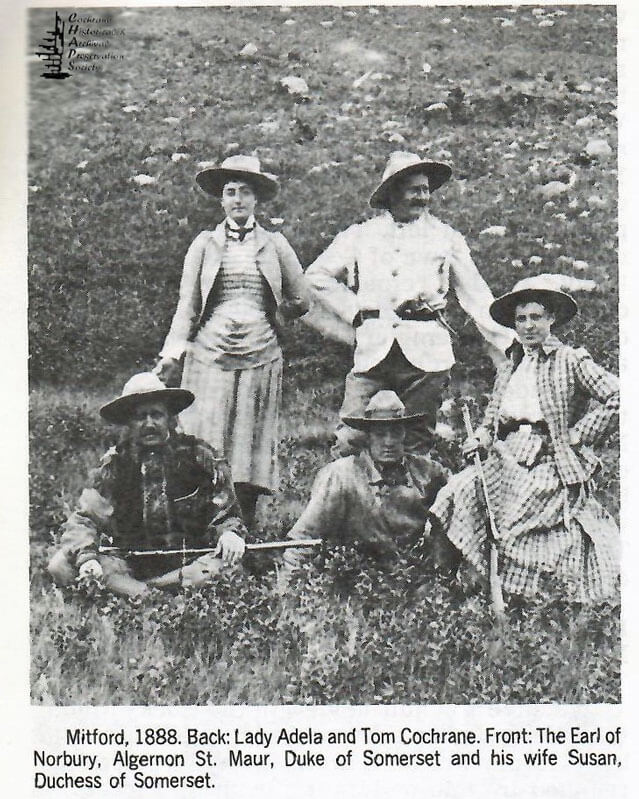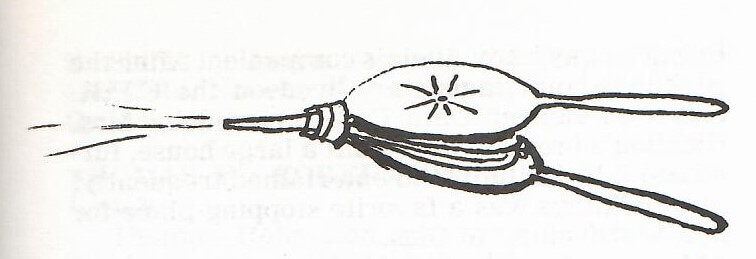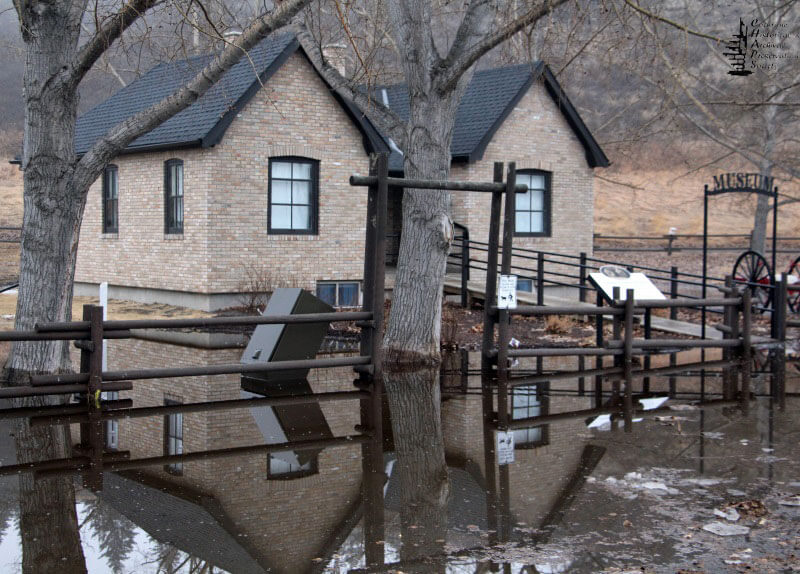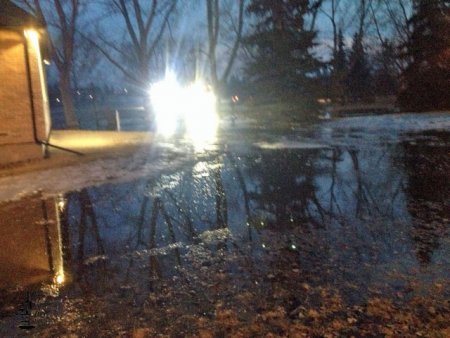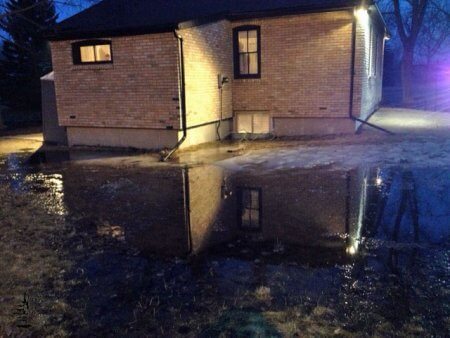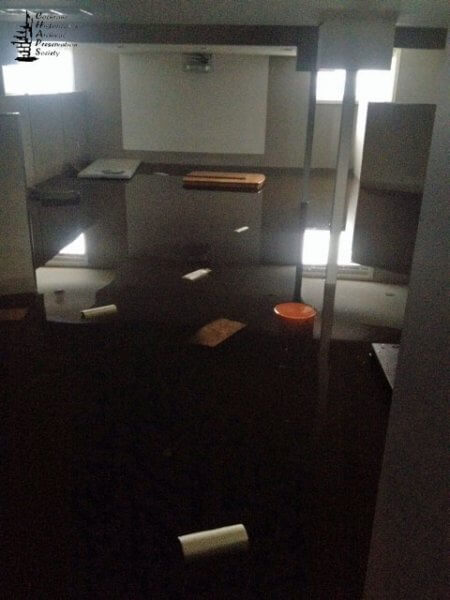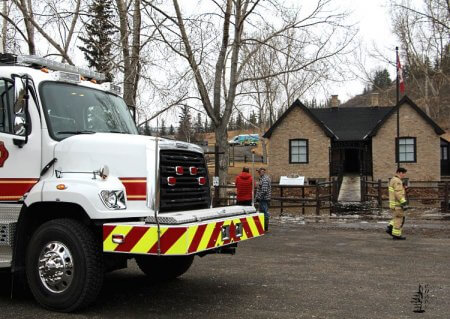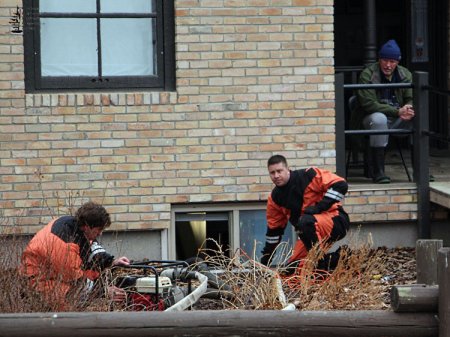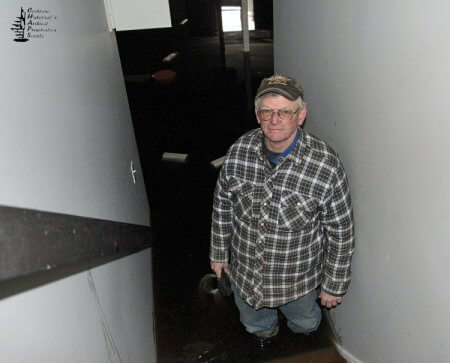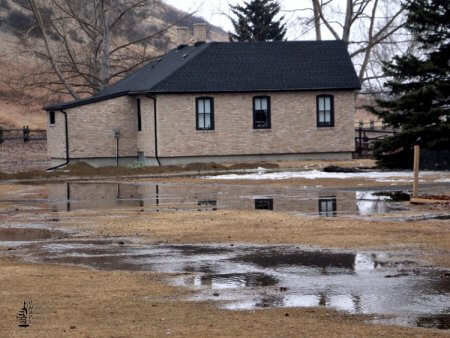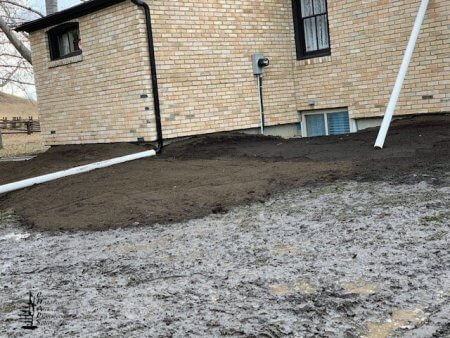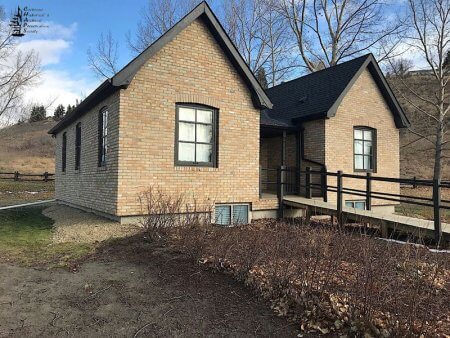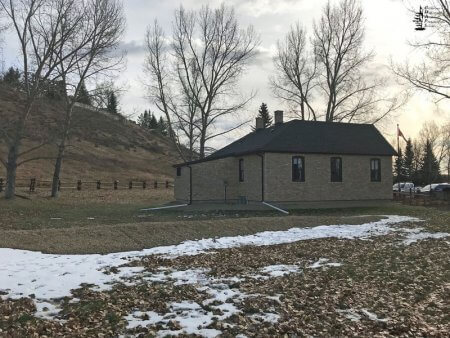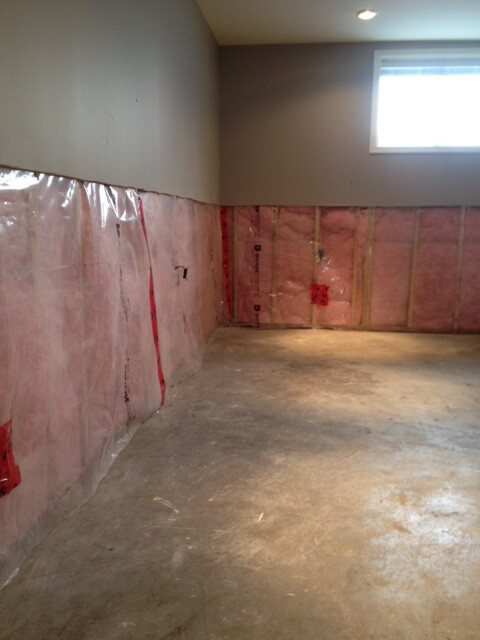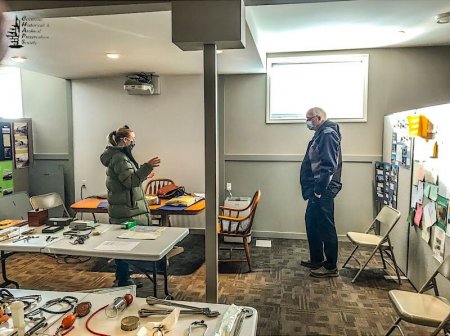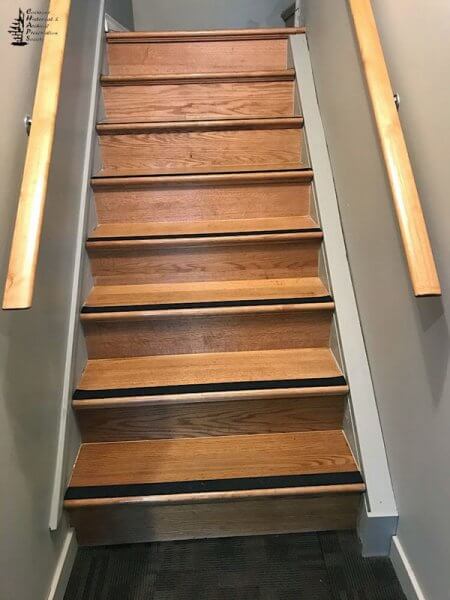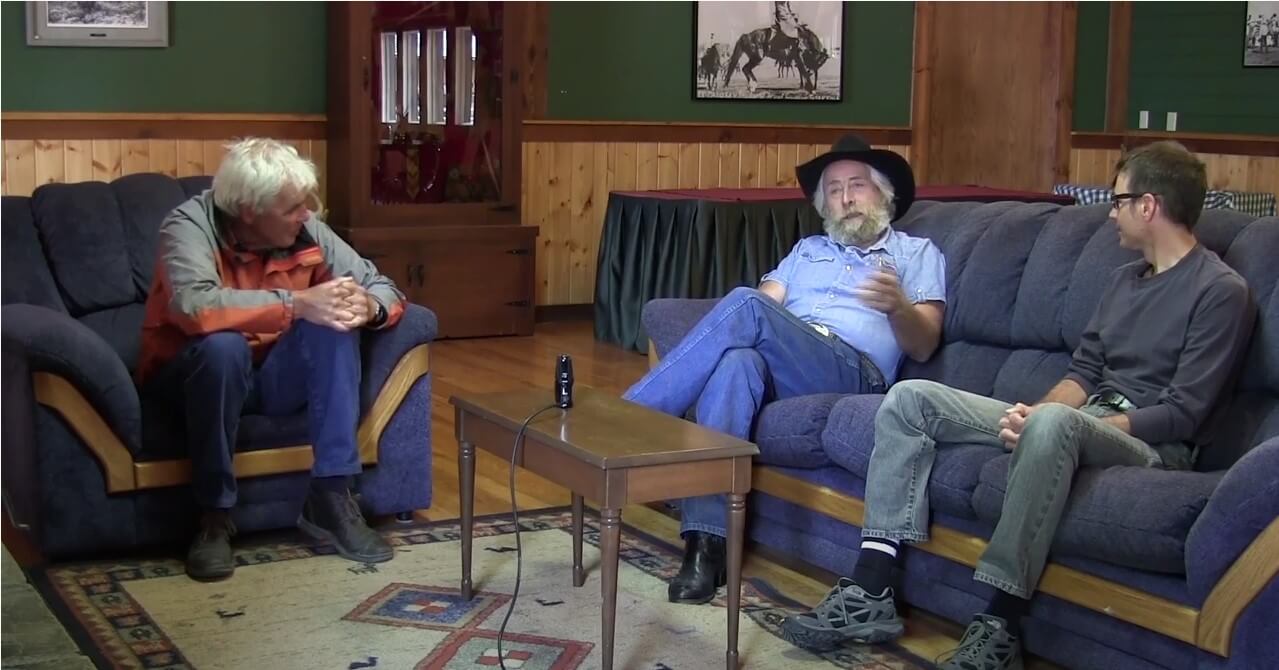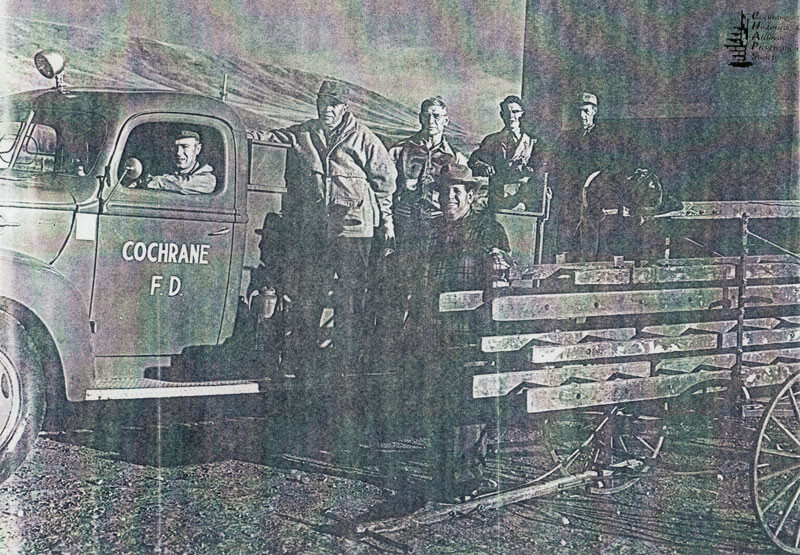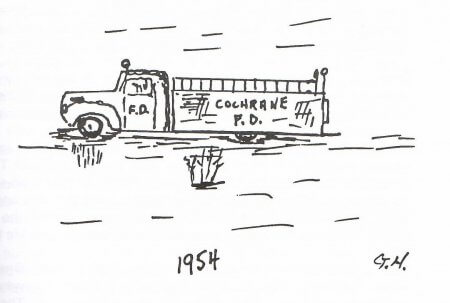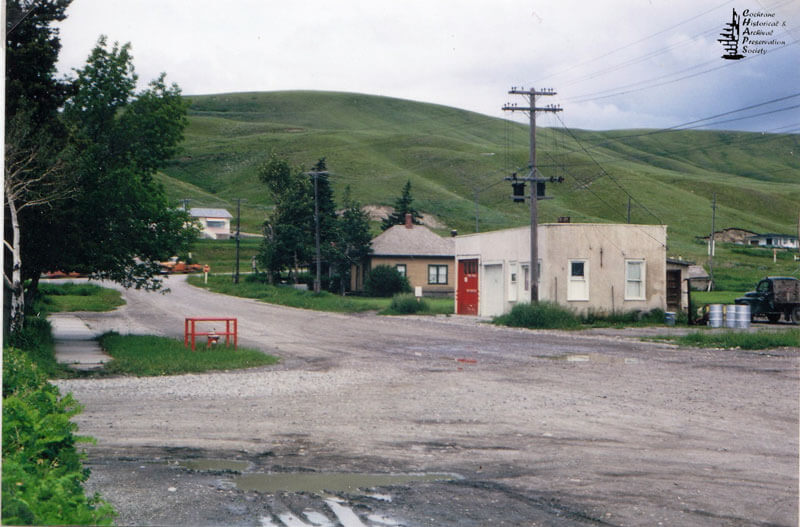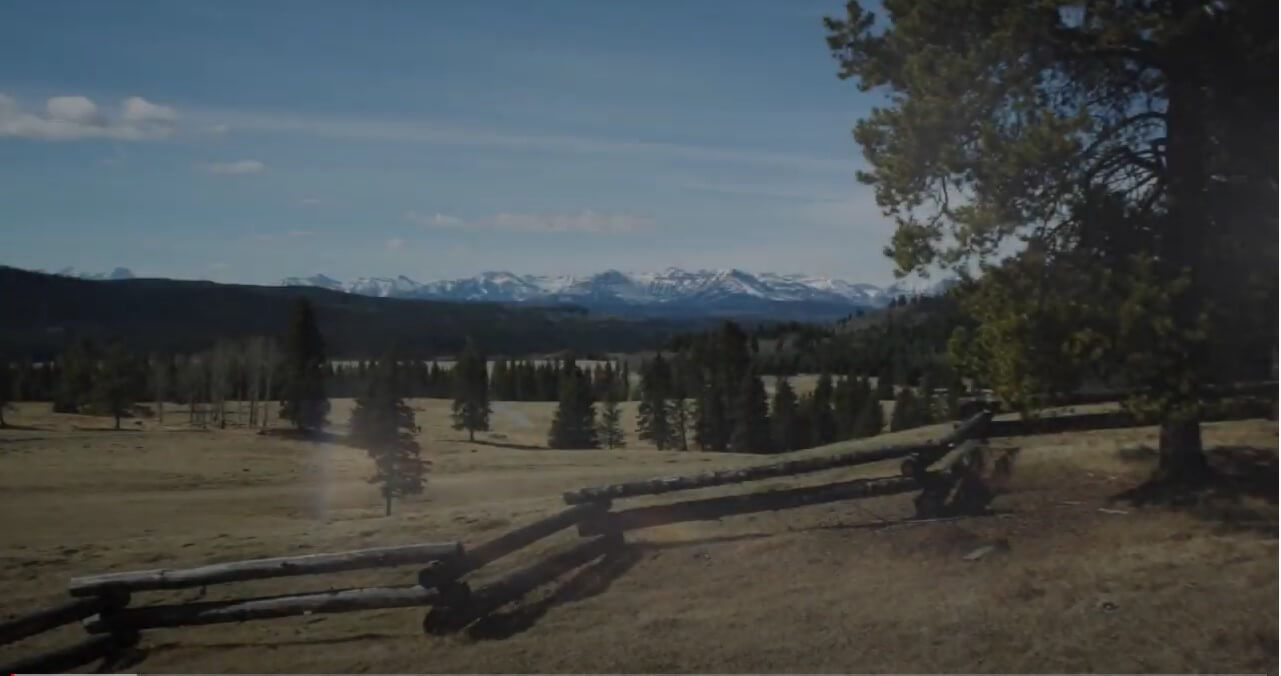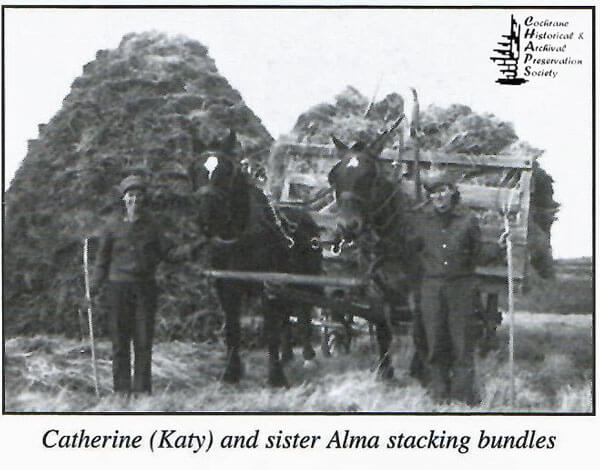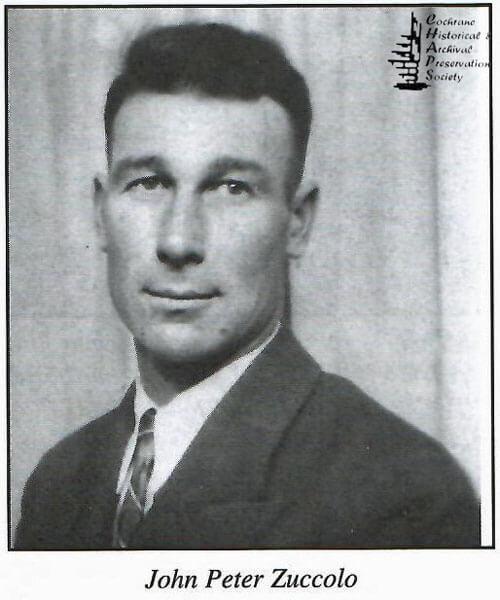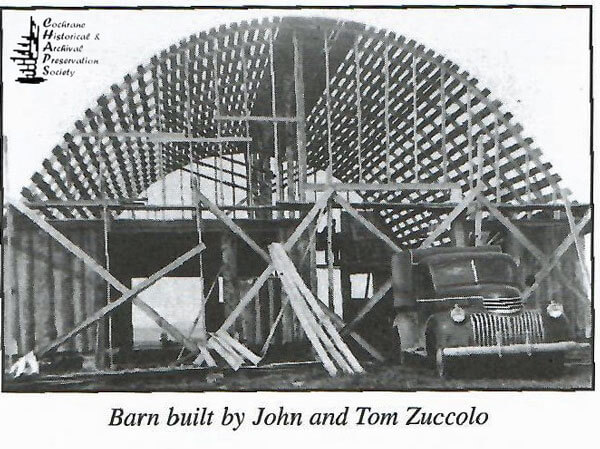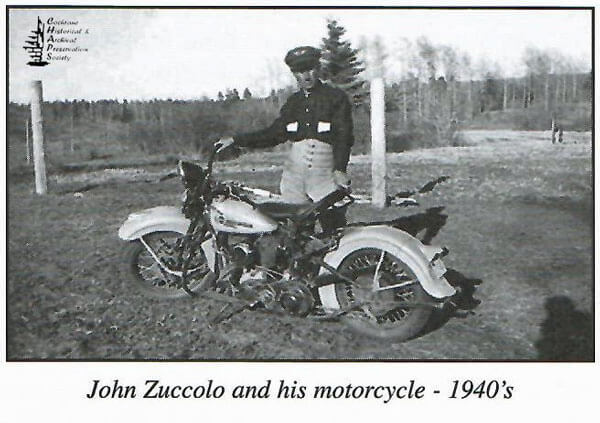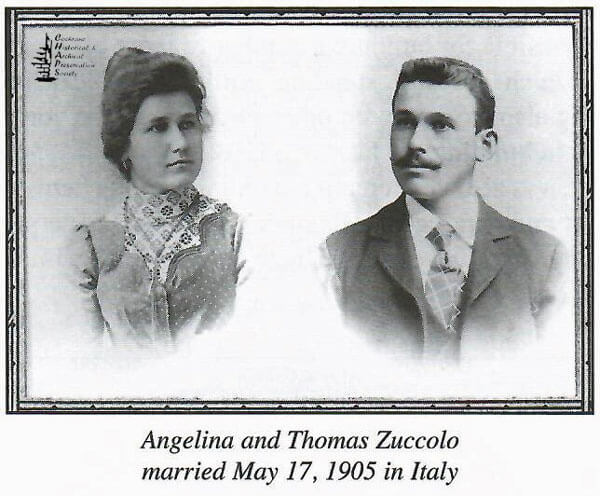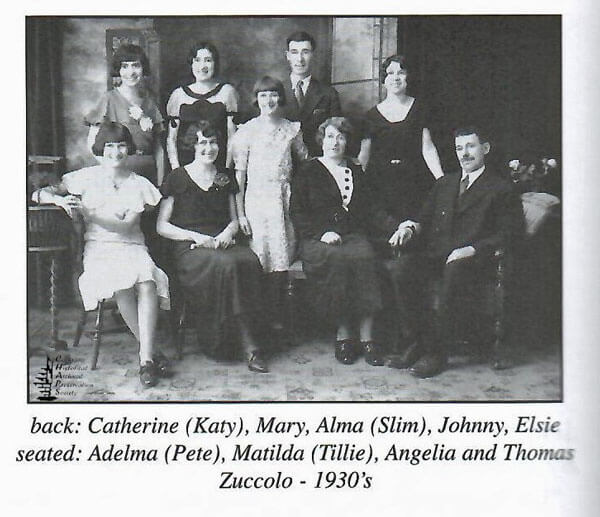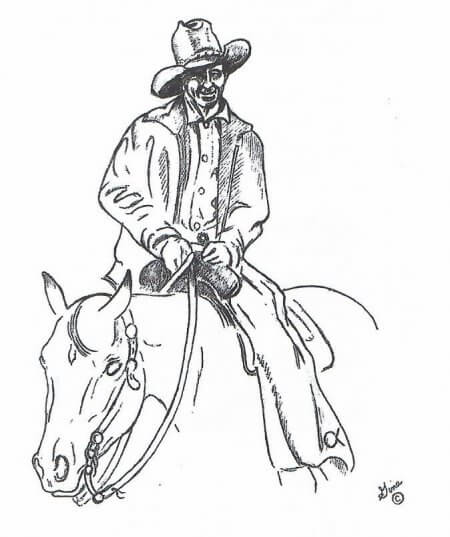JEAN D’ARTIGUE ALSO NAMED JOHN D’ARTIGUE PEYRON BROCQ – by Ellen Buckler
Jean D’Artigue, known locally as John D’Artigue, was born in France in 1855 and educated to be a teacher. He travelled to Canada and answered an advertisement in a newspaper calling for volunteers for The North West Mounted Police. His experiences are recorded in a book he wrote after his discharge from the Police Force and published in Toronto by Hunter Rose and Company.
Jean D’Artigue was the author of Six Years in the Canadian North West.” This book was the first book ever written concerning the North West Mounted Police and the first book ever written about the Force by a man who had served in its ranks. On April 14, 1874, at the age of 20, Jean D’Artigue was accepted into the North West Mounted Police Force. Enlisting in Montreal, he headed West to Manitoba in July of 1874, to join the Force’s famous march West. He was a member of “A” Troop, which travelled northwest to Fort Edmonton.
Mr. D’Artigue attempted to furnish the Canadian public with an account of the trials, privations, and adventures which the men encountered and the results of the great expedition. He tells of the journey into the far North West and his acquaintance with the Indians in their primeval state, and the return from Fort Saskatchewan by boat and rail to Quebec.
Mr. D’Artigue’s experiences on the vast grasslands came to an end on April 14, 1880, when he took his discharge. He sailed for Liverpool in the fall of 1880 en route to his native France.
In the early 1880s, Jean D’Artigue returned to Western Canada and settled on Spencer Creek, a short distance north of the Bow River. In 1883 he moved north to the Dog Pound Creek to settle.
The land was later surveyed as SE 14 24-28-5 5. Alex McLachlin built his house for him.
In 1884 he returned to France and brought his two nephews, Charles and John Pedeprat, and his brother and sister-in-law back to Canada with him. In 1888 John D’Artigue’s brother and his wife moved away from the Dog Pound area.
In 1890 Jean D’Artigue mortgaged his homestead to secure $225.00 with interest at 15% per year. He held an auction sale in 1895 to finish paying this debt.
Mr. and Mrs. Shea, also Mr. and Mrs. Piere and daughter Sammy lived with Jean for a while. Mrs. Shea and Mrs. Piere were his nieces. Sammy did very well with her studies, as her great uncle taught her while she stayed with him. The Pieres returned to France. Mr. and Mrs. Shea moved to the Beaver Dam area. When Mr. Shea passed away Mrs. Shea married Barney Madden. It is rumoured that Mr. Shea asked Mr. Madden to look after his wife when he was gone, or if he didn’t, he’d come back and haunt him. She is remembered by neighbours as “that friendly French lady who always did her wash in the Beaver Dam Creek.”
Mrs. Agnes Hutchinson remembers going with her father Charles Perrenoud to Mr. D’Artigue’s place to buy wine. Mr. D’Artigue had a tube through the wall from a barrel in the kitchen to his bedroom so he could have a sip in bed. She also remembers lifting the lid off the canner on the stove and seeing furry bodies boiling up, whole gophers, presumably for the chickens. Her uncle, Vincent Phipps, looked after Walter Hutchinson’s cattle on the D’Artigue place upon the Dog Pound and talks of being given too much wine in the corral.
“One time when Mr. D’Artigue stayed with us (Perrenouds), he read the Range Men by L. V. Kelly, and he enjoyed reading about General Steele, as he once travelled with him. One time they came to a river that was rough. Mr. D’Artigue fastened a rope around his waist and swam across. He said he was very strong at that time. The horses and carts then followed, then the other livestock. One time when a horse died while pulling a cart, it had to be replaced by a cow. General Steele didn’t think much of that, but Mr. D’Artigue thought it was a big joke.”
Mrs. Perrenoud remembers John D’Artigue quite well. He was a big strong man who hated cameras, but the private detective portraying “Cannon” on television reminds her of him. He was a great walker and always walked around the country to visit or on business.
In January 1914, Jean D’Artigue took out his Canadian citizenship.
Mrs. Mary Houghton remembers Mr. D’Artigue as being very friendly especially with young people. Her sister and brother-in-law, the Jim Myrams, were his neighbours. When Cecil Myram had the croup, Mr. D’Artigue fixed up some mixture, using homemade brandy and other things, it was a sure cure. Mrs. Houghton rode the range checking on the cattle and remembers the snake fence of rails all around the D’Artigue property. Mr. D’Artigue took in bulls to pasture for the winter. In the summer he made sandals from ends of apple boxes, which he wore in the summer. He froze his feet very severely when he was lost in a storm while he was with the Mounted Police. He spent months in the hospital in Fort Saskatchewan. This may have been the reason for making his own sandals. He later suffered from rheumatism.
In the spring of 1914, a public road was built through the D’Artigue land. Mr. D’Artigue rented land to Mrs. Oldaker. Later D. M. McRae, Fred Sholtz, A. Harrison, M. S. Matthews, John Morgan, and Jim Reeve also rented it. Mr. D’Artigue had protected the beaver. There were about 50 of them destroying the timber, so Mr. Harrison was issued a permit in 1921 to trap 20 beaver, but all pelts were to be sent to the Department of Agriculture in Edmonton.
The D’Artigue School District No. 3814 was formed with A. G. Butler as secretary-treasurer. Later D. M. McRae, A. Wells, and S. Tyrell held this office. As the school was never built, most families with school children moved out closer to a school. In later years a school bus served this area and Bill Postlethwaite bused children first to Chapelton, then to the Consolidated School at Westbrook.
Mr. D’Artigue went to California in the winter, as he was finding the winters harsh and his health was declining. He’d bring back cases of huge oranges which he’d hand out to children and friends. Often children had never had an orange before so it was especially treasured.
Mr. D’Artigue never married. Maybe the time he first went to an Indian settlement, where a white man had never been, was an experience he never forgot. As a special gift, the chief offered him an Indian maiden for a wife. He didn’t want to offend them, but he had to do some talking to get out of the situation unattached. By explaining he’d have to get permission from his superior, he was able to leave and made a point of not returning to that area.
In 1921 Mr. D’Artigue returned to France and on June 6, 1924, he passed away at the age of 69. He had written six books that were published, but not all were translated into English. There is a French copy at the Glenbow Foundation Library. In 1930 his ranch was sold to Lloyd Birkett. This land is now owned by a former mayor of Calgary, Jack Leslie. The Dartigue Lodge, where many good times have been had and still continue to be, was named in his memory.
